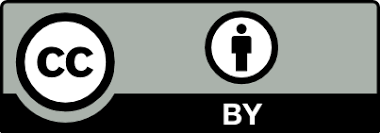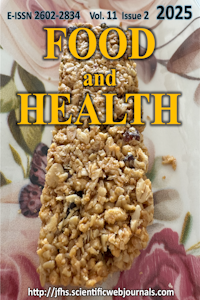Abstract
The global population is projected to exceed 10 billion by 2050. This rapid growth, especially with the increase in food loss and waste, has raised concerns about providing adequate food. The Food and Agriculture Organization of the United Nations (FAO) stated that a total of 1.05 billion tons of food was wasted worldwide in 2022, equivalent to 132 kilograms per person. It is noted that 2,4 billion people, particularly in rural areas, cannot access adequate, safe, and nutritious food. Food loss and waste manifest at every juncture of the food supply chain due to various factors such as urbanization, globalization, and changing consumption habits. Reducing food loss and waste can significantly reduce food insecurity and improve environmental sustainability. Sustainable food systems strategies, technological innovations, and policy activities are among the practices that prevent food loss and waste in Turkey and worldwide. Reducing food loss and waste enhances food security, reduces environmental impacts, and achieves global sustainable development goals. This review aims to summarize the status of food waste and loss in the world and Turkey and potential prevention strategies.
Ethical Statement
This study is not subject to ethical approval due to its research nature
References
- Aschemann-Witzel, J., De Hooge, I., Amani, P., Bech-Larsen, T., & Oostindjer, M. (2015). Consumer-related food waste: Causes and potential for action. Sustainability, 7(6), 6457–6477. https://doi.org/10.3390/su7066457
- Avrupa Komisyonu (2023). Assessing the economic, social and environmental impacts of food waste reduction targets – a model-based analysis. European Commission. https://op.europa.eu/en/publication-detail/-/publication/2f992667-1953-11ee-806b-01aa75ed71a1/language-en (Erişim tarihi 20.03.2025)
- Brennan, A., & Browne, S. (2021). Food waste and nutrition quality in the context of public health: A scoping review. International Journal of Environmental Research and Public Health, 18(10), 5379. https://doi.org/10.3390/ijerph18105379
- Cederberg, C., & Sonesson, U. (2011). Global food losses and food waste: extent, causes and prevention; study conducted for the International Congress Save Food! at Interpack 2011, [16-17 May], Düsseldorf, Germany. (J. Gustavsson,Ed.). Presented at the International Congress Save Food!, Rome: Food and Agriculture Organization of the United Nations.
- Chalak, A., Abou-Daher, C., Chaaban, J., & Abiad, M.G. (2016). The global economic and regulatory determinants of household food waste generation: A cross-country analysis. Waste Management, 48, 418–422. https://doi.org/10.1016/j.wasman.2015.11.040
- De Almeida Oroski, F., & Da Silva, J.M. (2023). Understanding food waste-reducing platforms: A mini-review. Waste Management & Research. The Journal for a Sustainable Circular Economy, 41(4), 816–827. https://doi.org/10.1177/0734242X221135248
- EU FUSIONS (2016). About FUSIONS. http://www.eu-fusions.org/index.php/about-fusions (Erişim tarihi 09.10.2024)
- European Commission (2020). Farm to Fork Strategy; For a fair, healthy and environmentally-friendly food system. https://food.ec.europa.eu/horizontal-topics/farm-fork-strategy_en#F2F-Publications (Erişim tarihi 09.10.2024)
- Facchini, F., Silvestri, B., Digiesi, S., & Lucchese, A. (2023). Agri-food loss and waste management: Win-win strategies for edible discarded fruits and vegetables sustainable reuse. Innovative Food Science & Emerging Technologies, 83, 103235. https://doi.org/10.1016/j.ifset.2022.103235
- FAO (2013). Food Wastage Footprint. Impacts on Natural Resources; FAO: Rome, Italy. https://reliefweb.int/report/world/food-wastage-footprint-impacts-natural-resources (Erişim tarihi 03.09.2024)
- FAO (2018). Food loss and waste and the right to adequate food: Making the connection. Food & Agriculture Org. http://books.google.ie/books?id=DWm1DwAAQBAJ&pg=PR4&dq=978-92-5-130932-2&hl=&cd=2&source=gbs_api (Erişim tarihi 09.09.2024)
- FAO (2019). Moving forward on food loss and waste reduction. Rome: Food and Agriculture Organization of the United Nations. https://openknowledge.fao.org/server/api/core/bitstreams/11f9288f-dc78-4171-8d02-92235b8d7dc7/content (Erişim tarihi 20.03.2025)
- FAO (2020). The State of Food Security and Nutrition in the World 2020. FAO, IFAD, UNICEF, WFP and WHO. https://doi.org/10.4060/ca9692en
- FAO (2021). Gıdayı İsraf Etmeden Yaşama Kılavuzunuz. Budapeşte: FAO, T.C. Tarım ve Orman Bakanlığı. https://openknowledge.fao.org/server/api/core/bitstreams/201423eb-c3c2-4aac-8627-dcd045d370d0/content (Erişim tarihi 20.03.2025)
- FAO (2022a). Tracking progress on food and agriculture-related SDG indicators 2022. Rome: FAO. https://doi.org/10.4060/cc1403en
- FAO (2022b). Voluntary code of conduct for food loss and waste reduction. Rome: FAO. https://doi.org/10.4060/cb9433en
- FAO (2023). The State of Food Security and Nutrition in the World 2023. Urbanization, agrifood systems transformation and healthy diets across the rural–urban continuum. Rome: FAO, IFAD, UNICEF, WFP and WHO. https://doi.org/10.4060/cc3017en
- FAO (2024). The State of Food Security and Nutrition in the World 2024. Financing to end hunger, food insecurity and malnutrition in all its forms. Rome: FAO, IFAD, UNICEF, WFP and WHO. https://doi.org/10.4060/cd1254en
- Freedman, M.R., & Brochado, C. (2010). Reducing portion size reduces food ıntake and plate waste. Obesity, 18(9), 1864–1866. https://doi.org/10.1038/oby.2009.480
- United Nation (2023). World Population Prospects 2022. https://www.un.org/development/desa/pd/content/World-Population-Prospects-2022 (Erişim tarihi 09.08.2024)
- Gunders, D. (2012). Wasted: How America Is Losing Up to 40 Percent of Its Food from Farm to Fork to Landfill. https://www.nrdc.org/sites/default/files/wasted-food-IP.pdf (Erişim tarihi 20.03.2025)
- Howard, P.H. (2021). Concentration and power in the food system: Who controls what we eat? (Vol. 3). Bloomsbury Publishing. https://doi.org/10.5040/9781350183100
- Jagau, H.L., & Vyrastekova, J. (2017). Behavioral approach to food waste: an experiment. British Food Journal, 119(4), 882–894. https://doi.org/10.1108/BFJ-05-2016-0213
- Kulikovskaja, V., & Aschemann-Witzel, J. (2017). Food waste avoidance actions in food retailing: the case of Denmark. Journal of International Food & Agribusiness Marketing, 29(4), 328–345. https://doi.org/10.1080/08974438.2017.1350244
- Leverenz, D., Moussawel, S., Maurer, C., Hafner, G., Schneider, F., Schmidt, T., & Kranert, M. (2019). Quantifying the prevention potential of avoidable food waste in households using a self-reporting approach. Resources, Conservation and Recycling, 150, 104417. https://doi.org/10.1016/j.resconrec.2019.104417
- Lipinski, B., Hanson, C., Waite, R., Searchinger, T., & Lomax, J. (2013). Reducing food loss and waste. http://pdf.wri.org/reducing_food_loss_and_waste.pdf (Erişim tarihi 20.03.2025)
- Lundqvist, J.C., & Molden, D. (2008). Saving Water: From Field to Fork – Curbing Losses and Wastage in the Food Chain. (SIWI Policy Brief). https://siwi.org/publications/saving-water-from-field-to-fork-curbing-losses-and-wastage-in-the-food-chain/ (Erişim tarihi 08.08.2024)
- Mazzucchelli, A., Gurioli, M., Graziano, D., Quacquarelli, B., & Aouina-Mejri, C. (2021). How to fight against food waste in the digital era: Key factors for a successful food sharing platform. Journal of Business Research, 124, 47–58. https://doi.org/10.1016/j.jbusres.2020.11.055
- Mbow, C., Rosenzweig, C., Barioni, L.G., Benton, T.G., Herrero, M., Krishnapilla, M., Liwenga, E., Pradhan, P., Rivera-Ferre, M.G., Sapkota, T., Tubiello, F.N., & Xu, Y. (2019). Chapter 5 “Food Security”. In N. Benkeblia, A. Challino, A. Khan, & J.R. Porter (Eds.), Climate Change and Land: An IPCC special report on climate change, desertification, land degradation, sustainable land management, food security, and greenhouse gas fluxes in terrestrial ecosystems (pp. 439-550). Cambridge University Press. https://doi.org/10.1017/9781009157988.007
- Papargyropoulou, E., Lozano, R.K., Steinberger, J., Wright, N., & Ujang, Z.B. (2014). The food waste hierarchy as a framework for the management of food surplus and food waste. Journal of Cleaner Production, 76, 106–115. https://doi.org/10.1016/j.jclepro.2014.04.020
- Pasarín, V. & Viinikainen, T. (2022). Gıda kaybı ve israfının önlenmesi ve azaltılması için elverişli bir yasal ortam oluşturulması. Yasal özet 9. Roma, FAO. https://openknowledge.fao.org/items/7d3baddf-8ad8-4219-8a9d-68b305c42948 (Erişim tarihi 20.03.2025)
- Pedersen, K.B., Land, B., & Kjærgård, B. (2015). Duality of health promotion and sustainable development: Perspectives on food waste reduction strategies. Journal of Transdisciplinary Environmental Studies, 14(2), 5–18.
- Pinto, R.S., dos Santos Pinto, R.M., Melo, F.F.S., Campos, S.S., & Cordovil, C.M.-S. (2018). A simple awareness campaign to promote food waste reduction in a University canteen. Waste Management, 76, 28–38. https://doi.org/10.1016/j.wasman.2018.02.044
- Poore, J., & Nemecek, T. (2018). Reducing food’s environmental impacts through producers and consumers. Science, 360(6392), 987–992. https://doi.org/10.1126/science.aaq0216
- Priefer, C., Bräutigam, K.-R., & Jörissen, J. (2013). Technology options for feeding 10 billion people options for cutting food waste: summary. Brussels: European Parliament. https://www.europarl.europa.eu/RegData/etudes/STUD/2013/513515/IPOL-JOIN_ET%282013%29513515%28SUM01%29_EN.pdf (Erişim tarihi 20.03.2025)
- Quested, T. E., Parry, A. D., Easteal, S., & Swannell, R. (2011). Food and drink waste from households in the UK. Nutrition Bulletin, 36(4), 460–467. https://doi.org/10.1111/j.1467-3010.2011.01924.x
- Rajan, J., Fredeen, A.L., Booth, A.L., & Watson, M. (2018). Measuring food waste and creating diversion opportunities at Canada’s Green University TM . Journal of Hunger & Environmental Nutrition, 13(4), 573–586. https://doi.org/10.1080/19320248.2017.1374900
- Reardon, T., Echeverria, R., Berdegué, J., Minten, B., Liverpool-Tasie, S., Tschirley, D., & Zilberman, D. (2019). Rapid transformation of food systems in developing regions: Highlighting the role of agricultural research & innovations. Agricultural Systems, 172, 47–59. https://doi.org/10.1016/j.agsy.2018.01.022
- Reynolds, C., Goucher, L., Quested, T., Bromley, S., Gillick, S., Wells, V.K., … Jackson, P. (2019). Review: Consumption-stage food waste reduction interventions – What works and how to design better interventions. Food Policy, 83, 7–27. https://doi.org/10.1016/j.foodpol.2019.01.009
- Richardson, R., Prescott, M. P., & Ellison, B. (2021). Impact of plate shape and size on individual food waste in a university dining hall. Resources, Conservation and Recycling, 168, 105293. https://doi.org/10.1016/j.resconrec.2020.105293
- Sıfır Atık. Sıfır Atık Nedir? https://sifiratik.gov.tr/sifir-atik/sifir-atik-nedir (Erişim tarihi 22.08.2024)
- Spang, E.S., Moreno, L.C., Pace, S.A., Achmon, Y., Donis-Gonzalez, I., Gosliner, W.A., … Tomich, T.P. (2019). Food Loss and waste: Measurement, drivers, and solutions. Annual Review of Environment and Resources, 44(1), 117–156. https://doi.org/10.1146/annurev-environ-101718-033228
- Steffen, W., Richardson, K., Rockström, J., Cornell, S.E., Fetzer, I., Bennett, E.M., … Sörlin, S. (2015). Planetary boundaries: Guiding human development on a changing planet. Science, 347(6223), 1259855. https://doi.org/10.1126/science.1259855
- Tatlıdil, F.F., Dellal, I., & Bayramoğlu, Z. (2013). Food Losses and Waste in Turkey: Country Report. Rome, Italy: FAO. https://www.fao.org/documents/card/en?details=274dfc13-7c02-428c-9ae7-e81724dfbfcc (Erişim tarihi 20.07.2024)
- Thiagarajah, K., & Getty, V.M. (2013). Impact on plate waste of switching from a tray to a trayless delivery system in a university dining hall and employee response to the switch. Journal of the Academy of Nutrition and Dietetics, 113(1), 141–145. https://doi.org/10.1016/j.jand.2012.07.004
- Türkiye Cumhuriyeti Tarım ve Orman Bakanlığı, (2021). Sürdürülebilir Gıda Sistemleri Ülke Raporu Türkiye, https://www.tarimorman.gov.tr/ABDGM/Belgeler (Erişim tarihi 22.07.2024)
- Türkiye İsraf Raporu (2018). Ankara: Tüketicinin Korunması ve Piyasa Gözetimi Genel Müdürlüğü. https://tuketici.ticaret.gov.tr/data/5e6b33e913b876e4200a0101/Turkiye_Israf_Raporu_2018.pdf (Erişim tarihi 20.03.2025)
- United Nations (2015). Transforming our world: the 2030 Agenda for Sustainable Development. https://sdgs.un.org/2030agenda (Erişim tarihi 20.07.2024)
- United Nations Environment Programme (2014). Prevention and Reduction of Food and Drink Waste in Businesses and Households: Guidance for Governments, Local Authorities, Businesses and Other Organisations. Version 1.0. https://wedocs.unep.org/xmlui/handle/20.500.11822/25194 (Erişim tarihi 01.07.2024)
- United Nations Environment Programme (2021). Food Waste Index Report 2021. Nairobi. https://tugip.org.tr/upload/PostFiles/211/5_FoodWasteIndex_Report2021c9082.pdf (Erişim tarihi 28.06.2024)
- United Nations Environment Programme. (2024). Food Waste Index Report 2024. Think Eat Save: Tracking Progress to Halve Global Food Waste. https://wedocs.unep.org/20.500.11822/45230. (Erişim tarihi 02.01.2025)
- US EPA (2024). Wasted Food Scale [Overviews and Factsheets]. from https://www.epa.gov/sustainable-management-food/wasted-food-scale (Erişim tarihi 28.06.2024)
- Wang, Y., Yuan, Z., & Tang, Y. (2021). Enhancing food security and environmental sustainability: A critical review of food loss and waste management. Resources, Environment and Sustainability, 4, 100023. https://doi.org/10.1016/j.resenv.2021.100023
- Whitehair, K.J., Shanklin, C.W., & Brannon, L.A. (2013). Written messages improve edible food waste behaviors in a university dining facility. Journal of the Academy of Nutrition and Dietetics, 113(1), 63–69. https://doi.org/10.1016/j.jand.2012.09.015
- Willett, W., Rockström, J., Loken, B., Springmann, M., Lang, T., Vermeulen, S., … Wood, A. (2019). Food in the Anthropocene: the EAT–Lancet Commission on healthy diets from sustainable food systems. The Lancet, 393(10170), 447–492. https://doi.org/10.1016/S0140-6736(18)31788-4
- Young, W., Russell, S.V., Robinson, C.A., & Barkemeyer, R. (2017). Can social media be a tool for reducing consumers’ food waste? A behaviour change experiment by a UK retailer. Resources, Conservation and Recycling, 117, 195–203. https://doi.org/10.1016/j.resconrec.2016.10.016
- Zero Waste Europe (2020). France’s law for fighting food waste.https://zerowasteeurope.eu/library/france-law-for-fighting-food-waste/ (Erişim tarihi 21.07.2024)
Abstract
Küresel nüfusun 2050 yılına kadar 10 milyarı aşması öngörülmektedir. Bu hızlı büyüme, özellikle gıda kaybı ve israfının artmasıyla birlikte, yeterli gıdanın sağlanması konusundaki endişeleri artırmıştır. Birleşmiş Milletler Gıda ve Tarım Örgütü (Food and Agriculture Organization of the United Nations, FAO), 2022 yılında dünya genelinde toplam 1,05 milyar ton gıda israf edildiğini ve bunun kişi başı 132 kilograma denk geldiğini belirtmiştir. Kırsal bölgeler başta olmak üzere 2,4 milyar insanın yeterli, güvenli ve besleyici gıdaya erişimi olmadığı belirtilmektedir. Gıda kaybı ve israfı, şehirleşme, küreselleşme ve değişen tüketim alışkanlıkları gibi çeşitli faktörler nedeniyle gıda tedarik zincirinin her aşamasında meydana gelmektedir. Gıda kaybını ve israfını azaltmak, gıda güvencesizliğini önemli ölçüde azaltabilir ve çevresel sürdürülebilirliği iyileştirebilir. Türkiye’de ve dünyada gıda kaybını ve israfını önlememeye yönelik yürütülen uygulamalar arasında sürdürülebilir gıda sistemleri stratejileri, teknolojik yenilikler ve politika faaliyetleri yer almaktadır. Gıda kaybı ve israfının azaltılması, gıda güvenliğini artırmaya, çevresel etkileri azaltmaya ve küresel sürdürülebilir kalkınma hedeflerine ulaşmaya katkı sağlamaktadır. Bu derlemenin amacı dünyada ve Türkiye'de gıda israfı ve kaybının durumunu ve olası önleme stratejilerini özetlemektir.
Ethical Statement
Araştırma niteliği bakımından etik izne tabii değildir.
References
- Aschemann-Witzel, J., De Hooge, I., Amani, P., Bech-Larsen, T., & Oostindjer, M. (2015). Consumer-related food waste: Causes and potential for action. Sustainability, 7(6), 6457–6477. https://doi.org/10.3390/su7066457
- Avrupa Komisyonu (2023). Assessing the economic, social and environmental impacts of food waste reduction targets – a model-based analysis. European Commission. https://op.europa.eu/en/publication-detail/-/publication/2f992667-1953-11ee-806b-01aa75ed71a1/language-en (Erişim tarihi 20.03.2025)
- Brennan, A., & Browne, S. (2021). Food waste and nutrition quality in the context of public health: A scoping review. International Journal of Environmental Research and Public Health, 18(10), 5379. https://doi.org/10.3390/ijerph18105379
- Cederberg, C., & Sonesson, U. (2011). Global food losses and food waste: extent, causes and prevention; study conducted for the International Congress Save Food! at Interpack 2011, [16-17 May], Düsseldorf, Germany. (J. Gustavsson,Ed.). Presented at the International Congress Save Food!, Rome: Food and Agriculture Organization of the United Nations.
- Chalak, A., Abou-Daher, C., Chaaban, J., & Abiad, M.G. (2016). The global economic and regulatory determinants of household food waste generation: A cross-country analysis. Waste Management, 48, 418–422. https://doi.org/10.1016/j.wasman.2015.11.040
- De Almeida Oroski, F., & Da Silva, J.M. (2023). Understanding food waste-reducing platforms: A mini-review. Waste Management & Research. The Journal for a Sustainable Circular Economy, 41(4), 816–827. https://doi.org/10.1177/0734242X221135248
- EU FUSIONS (2016). About FUSIONS. http://www.eu-fusions.org/index.php/about-fusions (Erişim tarihi 09.10.2024)
- European Commission (2020). Farm to Fork Strategy; For a fair, healthy and environmentally-friendly food system. https://food.ec.europa.eu/horizontal-topics/farm-fork-strategy_en#F2F-Publications (Erişim tarihi 09.10.2024)
- Facchini, F., Silvestri, B., Digiesi, S., & Lucchese, A. (2023). Agri-food loss and waste management: Win-win strategies for edible discarded fruits and vegetables sustainable reuse. Innovative Food Science & Emerging Technologies, 83, 103235. https://doi.org/10.1016/j.ifset.2022.103235
- FAO (2013). Food Wastage Footprint. Impacts on Natural Resources; FAO: Rome, Italy. https://reliefweb.int/report/world/food-wastage-footprint-impacts-natural-resources (Erişim tarihi 03.09.2024)
- FAO (2018). Food loss and waste and the right to adequate food: Making the connection. Food & Agriculture Org. http://books.google.ie/books?id=DWm1DwAAQBAJ&pg=PR4&dq=978-92-5-130932-2&hl=&cd=2&source=gbs_api (Erişim tarihi 09.09.2024)
- FAO (2019). Moving forward on food loss and waste reduction. Rome: Food and Agriculture Organization of the United Nations. https://openknowledge.fao.org/server/api/core/bitstreams/11f9288f-dc78-4171-8d02-92235b8d7dc7/content (Erişim tarihi 20.03.2025)
- FAO (2020). The State of Food Security and Nutrition in the World 2020. FAO, IFAD, UNICEF, WFP and WHO. https://doi.org/10.4060/ca9692en
- FAO (2021). Gıdayı İsraf Etmeden Yaşama Kılavuzunuz. Budapeşte: FAO, T.C. Tarım ve Orman Bakanlığı. https://openknowledge.fao.org/server/api/core/bitstreams/201423eb-c3c2-4aac-8627-dcd045d370d0/content (Erişim tarihi 20.03.2025)
- FAO (2022a). Tracking progress on food and agriculture-related SDG indicators 2022. Rome: FAO. https://doi.org/10.4060/cc1403en
- FAO (2022b). Voluntary code of conduct for food loss and waste reduction. Rome: FAO. https://doi.org/10.4060/cb9433en
- FAO (2023). The State of Food Security and Nutrition in the World 2023. Urbanization, agrifood systems transformation and healthy diets across the rural–urban continuum. Rome: FAO, IFAD, UNICEF, WFP and WHO. https://doi.org/10.4060/cc3017en
- FAO (2024). The State of Food Security and Nutrition in the World 2024. Financing to end hunger, food insecurity and malnutrition in all its forms. Rome: FAO, IFAD, UNICEF, WFP and WHO. https://doi.org/10.4060/cd1254en
- Freedman, M.R., & Brochado, C. (2010). Reducing portion size reduces food ıntake and plate waste. Obesity, 18(9), 1864–1866. https://doi.org/10.1038/oby.2009.480
- United Nation (2023). World Population Prospects 2022. https://www.un.org/development/desa/pd/content/World-Population-Prospects-2022 (Erişim tarihi 09.08.2024)
- Gunders, D. (2012). Wasted: How America Is Losing Up to 40 Percent of Its Food from Farm to Fork to Landfill. https://www.nrdc.org/sites/default/files/wasted-food-IP.pdf (Erişim tarihi 20.03.2025)
- Howard, P.H. (2021). Concentration and power in the food system: Who controls what we eat? (Vol. 3). Bloomsbury Publishing. https://doi.org/10.5040/9781350183100
- Jagau, H.L., & Vyrastekova, J. (2017). Behavioral approach to food waste: an experiment. British Food Journal, 119(4), 882–894. https://doi.org/10.1108/BFJ-05-2016-0213
- Kulikovskaja, V., & Aschemann-Witzel, J. (2017). Food waste avoidance actions in food retailing: the case of Denmark. Journal of International Food & Agribusiness Marketing, 29(4), 328–345. https://doi.org/10.1080/08974438.2017.1350244
- Leverenz, D., Moussawel, S., Maurer, C., Hafner, G., Schneider, F., Schmidt, T., & Kranert, M. (2019). Quantifying the prevention potential of avoidable food waste in households using a self-reporting approach. Resources, Conservation and Recycling, 150, 104417. https://doi.org/10.1016/j.resconrec.2019.104417
- Lipinski, B., Hanson, C., Waite, R., Searchinger, T., & Lomax, J. (2013). Reducing food loss and waste. http://pdf.wri.org/reducing_food_loss_and_waste.pdf (Erişim tarihi 20.03.2025)
- Lundqvist, J.C., & Molden, D. (2008). Saving Water: From Field to Fork – Curbing Losses and Wastage in the Food Chain. (SIWI Policy Brief). https://siwi.org/publications/saving-water-from-field-to-fork-curbing-losses-and-wastage-in-the-food-chain/ (Erişim tarihi 08.08.2024)
- Mazzucchelli, A., Gurioli, M., Graziano, D., Quacquarelli, B., & Aouina-Mejri, C. (2021). How to fight against food waste in the digital era: Key factors for a successful food sharing platform. Journal of Business Research, 124, 47–58. https://doi.org/10.1016/j.jbusres.2020.11.055
- Mbow, C., Rosenzweig, C., Barioni, L.G., Benton, T.G., Herrero, M., Krishnapilla, M., Liwenga, E., Pradhan, P., Rivera-Ferre, M.G., Sapkota, T., Tubiello, F.N., & Xu, Y. (2019). Chapter 5 “Food Security”. In N. Benkeblia, A. Challino, A. Khan, & J.R. Porter (Eds.), Climate Change and Land: An IPCC special report on climate change, desertification, land degradation, sustainable land management, food security, and greenhouse gas fluxes in terrestrial ecosystems (pp. 439-550). Cambridge University Press. https://doi.org/10.1017/9781009157988.007
- Papargyropoulou, E., Lozano, R.K., Steinberger, J., Wright, N., & Ujang, Z.B. (2014). The food waste hierarchy as a framework for the management of food surplus and food waste. Journal of Cleaner Production, 76, 106–115. https://doi.org/10.1016/j.jclepro.2014.04.020
- Pasarín, V. & Viinikainen, T. (2022). Gıda kaybı ve israfının önlenmesi ve azaltılması için elverişli bir yasal ortam oluşturulması. Yasal özet 9. Roma, FAO. https://openknowledge.fao.org/items/7d3baddf-8ad8-4219-8a9d-68b305c42948 (Erişim tarihi 20.03.2025)
- Pedersen, K.B., Land, B., & Kjærgård, B. (2015). Duality of health promotion and sustainable development: Perspectives on food waste reduction strategies. Journal of Transdisciplinary Environmental Studies, 14(2), 5–18.
- Pinto, R.S., dos Santos Pinto, R.M., Melo, F.F.S., Campos, S.S., & Cordovil, C.M.-S. (2018). A simple awareness campaign to promote food waste reduction in a University canteen. Waste Management, 76, 28–38. https://doi.org/10.1016/j.wasman.2018.02.044
- Poore, J., & Nemecek, T. (2018). Reducing food’s environmental impacts through producers and consumers. Science, 360(6392), 987–992. https://doi.org/10.1126/science.aaq0216
- Priefer, C., Bräutigam, K.-R., & Jörissen, J. (2013). Technology options for feeding 10 billion people options for cutting food waste: summary. Brussels: European Parliament. https://www.europarl.europa.eu/RegData/etudes/STUD/2013/513515/IPOL-JOIN_ET%282013%29513515%28SUM01%29_EN.pdf (Erişim tarihi 20.03.2025)
- Quested, T. E., Parry, A. D., Easteal, S., & Swannell, R. (2011). Food and drink waste from households in the UK. Nutrition Bulletin, 36(4), 460–467. https://doi.org/10.1111/j.1467-3010.2011.01924.x
- Rajan, J., Fredeen, A.L., Booth, A.L., & Watson, M. (2018). Measuring food waste and creating diversion opportunities at Canada’s Green University TM . Journal of Hunger & Environmental Nutrition, 13(4), 573–586. https://doi.org/10.1080/19320248.2017.1374900
- Reardon, T., Echeverria, R., Berdegué, J., Minten, B., Liverpool-Tasie, S., Tschirley, D., & Zilberman, D. (2019). Rapid transformation of food systems in developing regions: Highlighting the role of agricultural research & innovations. Agricultural Systems, 172, 47–59. https://doi.org/10.1016/j.agsy.2018.01.022
- Reynolds, C., Goucher, L., Quested, T., Bromley, S., Gillick, S., Wells, V.K., … Jackson, P. (2019). Review: Consumption-stage food waste reduction interventions – What works and how to design better interventions. Food Policy, 83, 7–27. https://doi.org/10.1016/j.foodpol.2019.01.009
- Richardson, R., Prescott, M. P., & Ellison, B. (2021). Impact of plate shape and size on individual food waste in a university dining hall. Resources, Conservation and Recycling, 168, 105293. https://doi.org/10.1016/j.resconrec.2020.105293
- Sıfır Atık. Sıfır Atık Nedir? https://sifiratik.gov.tr/sifir-atik/sifir-atik-nedir (Erişim tarihi 22.08.2024)
- Spang, E.S., Moreno, L.C., Pace, S.A., Achmon, Y., Donis-Gonzalez, I., Gosliner, W.A., … Tomich, T.P. (2019). Food Loss and waste: Measurement, drivers, and solutions. Annual Review of Environment and Resources, 44(1), 117–156. https://doi.org/10.1146/annurev-environ-101718-033228
- Steffen, W., Richardson, K., Rockström, J., Cornell, S.E., Fetzer, I., Bennett, E.M., … Sörlin, S. (2015). Planetary boundaries: Guiding human development on a changing planet. Science, 347(6223), 1259855. https://doi.org/10.1126/science.1259855
- Tatlıdil, F.F., Dellal, I., & Bayramoğlu, Z. (2013). Food Losses and Waste in Turkey: Country Report. Rome, Italy: FAO. https://www.fao.org/documents/card/en?details=274dfc13-7c02-428c-9ae7-e81724dfbfcc (Erişim tarihi 20.07.2024)
- Thiagarajah, K., & Getty, V.M. (2013). Impact on plate waste of switching from a tray to a trayless delivery system in a university dining hall and employee response to the switch. Journal of the Academy of Nutrition and Dietetics, 113(1), 141–145. https://doi.org/10.1016/j.jand.2012.07.004
- Türkiye Cumhuriyeti Tarım ve Orman Bakanlığı, (2021). Sürdürülebilir Gıda Sistemleri Ülke Raporu Türkiye, https://www.tarimorman.gov.tr/ABDGM/Belgeler (Erişim tarihi 22.07.2024)
- Türkiye İsraf Raporu (2018). Ankara: Tüketicinin Korunması ve Piyasa Gözetimi Genel Müdürlüğü. https://tuketici.ticaret.gov.tr/data/5e6b33e913b876e4200a0101/Turkiye_Israf_Raporu_2018.pdf (Erişim tarihi 20.03.2025)
- United Nations (2015). Transforming our world: the 2030 Agenda for Sustainable Development. https://sdgs.un.org/2030agenda (Erişim tarihi 20.07.2024)
- United Nations Environment Programme (2014). Prevention and Reduction of Food and Drink Waste in Businesses and Households: Guidance for Governments, Local Authorities, Businesses and Other Organisations. Version 1.0. https://wedocs.unep.org/xmlui/handle/20.500.11822/25194 (Erişim tarihi 01.07.2024)
- United Nations Environment Programme (2021). Food Waste Index Report 2021. Nairobi. https://tugip.org.tr/upload/PostFiles/211/5_FoodWasteIndex_Report2021c9082.pdf (Erişim tarihi 28.06.2024)
- United Nations Environment Programme. (2024). Food Waste Index Report 2024. Think Eat Save: Tracking Progress to Halve Global Food Waste. https://wedocs.unep.org/20.500.11822/45230. (Erişim tarihi 02.01.2025)
- US EPA (2024). Wasted Food Scale [Overviews and Factsheets]. from https://www.epa.gov/sustainable-management-food/wasted-food-scale (Erişim tarihi 28.06.2024)
- Wang, Y., Yuan, Z., & Tang, Y. (2021). Enhancing food security and environmental sustainability: A critical review of food loss and waste management. Resources, Environment and Sustainability, 4, 100023. https://doi.org/10.1016/j.resenv.2021.100023
- Whitehair, K.J., Shanklin, C.W., & Brannon, L.A. (2013). Written messages improve edible food waste behaviors in a university dining facility. Journal of the Academy of Nutrition and Dietetics, 113(1), 63–69. https://doi.org/10.1016/j.jand.2012.09.015
- Willett, W., Rockström, J., Loken, B., Springmann, M., Lang, T., Vermeulen, S., … Wood, A. (2019). Food in the Anthropocene: the EAT–Lancet Commission on healthy diets from sustainable food systems. The Lancet, 393(10170), 447–492. https://doi.org/10.1016/S0140-6736(18)31788-4
- Young, W., Russell, S.V., Robinson, C.A., & Barkemeyer, R. (2017). Can social media be a tool for reducing consumers’ food waste? A behaviour change experiment by a UK retailer. Resources, Conservation and Recycling, 117, 195–203. https://doi.org/10.1016/j.resconrec.2016.10.016
- Zero Waste Europe (2020). France’s law for fighting food waste.https://zerowasteeurope.eu/library/france-law-for-fighting-food-waste/ (Erişim tarihi 21.07.2024)
Details
| Primary Language | Turkish |
|---|---|
| Subjects | Public Health Nutrition |
| Journal Section | Review Article |
| Authors | |
| Early Pub Date | March 22, 2025 |
| Publication Date | March 28, 2025 |
| Submission Date | November 2, 2024 |
| Acceptance Date | January 7, 2025 |
| Published in Issue | Year 2025 Volume: 11 Issue: 2 |
Journal is licensed under a
CreativeCommons Attribtion-ShareAlike 4.0 International Licence 


Diamond Open Access refers to a scholarly publication model in which journals and platforms do not charge fees to either authors or readers.
Open Access Statement:
This is an open access journal which means that all content is freely available without charge to the user or his/her institution. Users are allowed to read, download, copy, distribute, print, search, or link to the full texts of the articles, or use them for any other lawful purpose, without asking prior permission from the publisher or the author. This is in accordance with the BOAI definition of open access.
Archiving Policy:
Archiving is done according to ULAKBİM "DergiPark" publication policy (LOCKSS).

